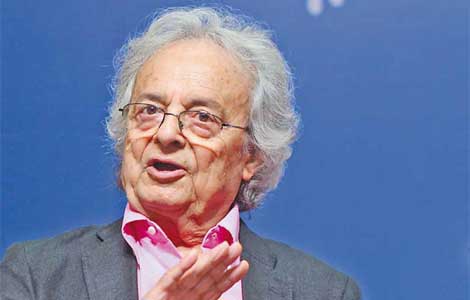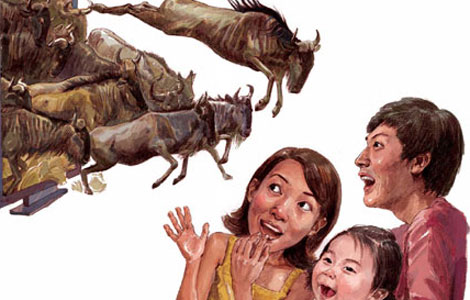Seedlings from outer space
Updated: 2013-08-20 08:00
By He Na and Sun Li (China Daily)
|
||||||||
The picking season for Dahongpao tea occurs in mid-April or early May and although machines are now used in the process, the season often resembles a family reunion as members rush home to take part in the harvest.
Dahongpao tea is representative of Wuyi rock tea that grows in cracks in the rocks. Top-grade Dahongpao tea is always mellow, with a strong aroma and a long-lasting sweet after-taste.
The green plantations that stretch far into the distance and along the hills of Wuyi Mountain seldom attract visitors.
However, Huang Shoushan, director of the Wuyishan Xianming Tea Plant is a hardy man. No matter how scorching the sunshine, he will take the long walk to a 20-square-meter field, which is overrun by weeds that often obscure the 18 tea seedlings, which are about 30 centimeters tall.
"My primary task is to keep them alive. They were only moved outside the greenhouse a few months ago. We didn't get rid of the weeds for fear of damaging the roots of the seedlings," said the 63-year-old.
"On first glance, these seedlings look no different to any others, but on closer inspection, you can see that the leaves are bigger than those of similar varieties at the same age," he explained.
He is especially nervous about these seedlings because of their genetic background and extraordinary history. Not only do the seedlings come from the six remaining Dahongpao "mother" trees, they have also been to outer space, courtesy of a two-week trip aboard the unmanned Shenzhou VIII craft in November, 2011.
"The successful extra-planetary breeding of other types of plants gives me plenty of reasons to believe that these small seedlings may lead to a revolution in Dahongpao tea in the future," said Huang Shoushan.
Huang Anmin, director of the Tea Research Institute at Huaqiao University in Xiamen, Fujian province, shared the same opinion of the experiment, which will end in December 2018.
"The program mainly concentrates on crops and vegetables. So extra-planetary breeding of Dahongpao, a tribute tea in ancient times, will turn a new leaf in the history of Chinese tea," he said.
The program has produced a number of interesting results, according to Liu Jianfu, associate professor of bioengineering and biotechnology at Huaqiao University. "So far, we have found that the leaves have become larger, the color is deeper and better photosynthesis has been achieved. Later, our focus will be on assessing the seedlings' resistance to insects and pests and how changes in the environment alter the quality of the tea," he said.
China's first extra-planetary program started in 1987 and so far more than 70 plants of some 1,000 varieties have been involved.
To further improve the strain, several Dahongpao tea seeds were sent into space on June 11 for a 15-day trip aboard Shenzhou X.
"Both the quality and variety of Dahongpao tea seeds are expected to improve. If the extra-planetary breeding of tea seeds can be promoted widely, people will be able to buy high quality Dahongpao tea at a lower price in the future," said Liu Guoying, director of the Tea Association of Wuyishan City.

 Snowden reporter to publish UK secrets
Snowden reporter to publish UK secrets
 PLA aerobatic team to perform in Russia
PLA aerobatic team to perform in Russia
 Poetry with power
Poetry with power
 A game Chinese hoopsters are bound to lose
A game Chinese hoopsters are bound to lose
 Wild Africa: The new attraction to Chinese tourists
Wild Africa: The new attraction to Chinese tourists
 Peng Shuai, Hsieh Su-wei win Cincinnati title
Peng Shuai, Hsieh Su-wei win Cincinnati title
 Ride to fly on the top of mountains
Ride to fly on the top of mountains
 PLA aerobatic team's overseas debut
PLA aerobatic team's overseas debut
Most Viewed
Editor's Picks

|

|

|

|

|

|
Today's Top News
Western program new engine for growth
China, Kenya agree to bolster ties
Online shopping clicking up
Typhoon wreaks havoc in the south
ROK-US drill starts as tensions ease with DPRK
Manners missing in overseas travel
Snowden reporter threaten UK
Egypt's Mubarak may be freed
US Weekly

|

|







